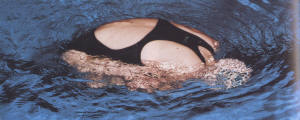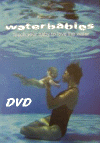|
Swimming Past 50 |
Why not consider a residential swimming course with us.
Learn to Swim – Residential WorkshopsIntensive Swimming Courses |
|
|
Irene at Swim-Easy |
Gay at SwimWithUs |
Steve at ErgoSwim |
We know that making the decision to book swimming lessons is very difficult for some. For that reason we always make sure you have ample opportunity to talk with us first.
We are so confident that even the most fearful will enjoy Learning to Swim With Us with us that we promise that if you find you don’t want to continue after your first private swimming lesson then all it will cost you is your time and travelling.
We know that first step towards booking swimming lessons is all important. For that reason we always make sure you have ample opportunity to talk with us first.
Please note that this website is Gay’s at Swim With Us. Irene and Steve each have their own websites and we work as individuals. I will be quite happy to help you find the right place for your lessons. Irene has a lovely private pool for your individual use. Steve teaches in public pools and can also offer private swimming lessons. He was also trained as a Total Immersion Coach. Whoever you choose for your residential swimming lessons you can be assured of a first class service for your one-to-one lessons with your instructor in the water with you.
Jumping Entries
Prior to teaching a jumping entry it is important to give consideration to the depth of water in relation to size of the pupil (hard impact with the pool floor can result in injury). It is important to teach the pupil how to land safely i.e. bending the knees to absorb the force.
WITH HELPER ON THE SIDE
helper secured and holding pupil’s hand
Teaching Points
toes over the edge
bend knees on landing
Considerations
suitable for those with confidence
pupils must normally be able to stand in the water
not suitable in very shallow water
WITH HELPER IN THE WATER
helper reaches towards the child
Considerations
helper must be confident in the water
helper should be an adult
UNAIDED
Once the pupil can jump confidently to a helper in the water the next step is to jump unaided. At this point it is vital to stress:
Teaching Points
look forwards
stress feet first entry
Benefits of an unaided jumping entry
al lows the whole group to enter at the same time
saves time
is good fun
swim school – private swimming instructors – swim classes for adults
Back Crawl
Some learners prefer Back Crawl because the face is clear of the water and breathing is easy.
Back Crawl with its continuous alternating actions is the most efficient backstroke and invariably used in backstroke competition.
There are obvious similarities between Front Crawl and Back Crawl. These associations are useful when pupils are reminded of a skill or a part of a skill which is familiar to them.
Body Position
Key Points
supine horizontal and streamlined
the head is pillowed in the water ears just submerged
the head is kept still eyes look upwards or slightly towards the feet
the chin may be tucked down slightly to help to keep the legs in the water
the hips must be close to the surface
the shoulders lean or roll into the stroke
there is a slight slope down from head to hips to keep the legs in the water
the legs tend to sway towards the pulling arm. This is kept to a minimum by an efficient leg action
Leg Action
The leg action helps to maintain the horizontal body position and balances the arm action. This minimises the tendency for the legs to sway from side to side. It may contribute some propulsion
Key Points
the continuous up and down alternating action is initiated at the hips
the legs work close together big toes nearly brushing past each other
the legs are almost straight with the knees staying below the surface
the ankles are relaxed to allow the toes to point – (plantar flexed) and to in-toe naturally
the feet kick to the surface at the end of the upbeat without splashing
learn to swim tool – babies swimming classes – child swimming lessons
Swimming Lesson Croydon
Floating
Mushroom (Jelly Fish) Float

"What goes up must come down" is true and applicable to learners who jump up to try and float. If the skill starts from a standing position the shoulders should be lowered and the feet gently lifted from the pool floor.
There are a few who because of their physical make up are unable to remain afloat even with their lungs full of air. Such non-floaters may need to move their arms and legs a little to achieve flotation.
The mushroom float is easy because balance is achieved automatically. Some of the upper back should be above the surface hence the name of the skill. It is a useful test for flotation.
shoulders down
take a breath
lift the feet
knees tucked
head down towards the knees
arms wrapped around the knees or shins
Pupils can count to time themselves. Ten seconds is adequate. Pupils should be discouraged from holding their breath for longer periods.
learn how to swim – swimming coaching – learn to swim london
Learn to Swim Croydon
Acaster Malbis Acomb Askham Bryan Askham Richard Bishopthorpe Copmanthorpe Crockey Hill Deighton Dunnington Earswick Elvington Fulford Haxby Heslington Hessay Holtby Huntington Kexby Knapton Murton Naburn Nether Poppleton New Earswick Osbaldwick Rawcliffe Rufforth Skelton Stockton on the Forest Strensall Towthorpe Upper Poppleton Wheldrake Wiggington York
Back Crawl
Some learners prefer Back Crawl because the face is clear of the water and breathing is easy.
Back Crawl with its continuous alternating actions is the most efficient backstroke and invariably used in backstroke competition.
There are obvious similarities between Front Crawl and Back Crawl. These associations are useful when pupils are reminded of a skill or a part of a skill which is familiar to them.
Body Position
Key Points
supine horizontal and streamlined
the head is pillowed in the water ears just submerged
the head is kept still eyes look upwards or slightly towards the feet
the chin may be tucked down slightly to help to keep the legs in the water
the hips must be close to the surface
the shoulders lean or roll into the stroke
there is a slight slope down from head to hips to keep the legs in the water
the legs tend to sway towards the pulling arm. This is kept to a minimum by an efficient leg action
Leg Action
The leg action helps to maintain the horizontal body position and balances the arm action. This minimises the tendency for the legs to sway from side to side. It may contribute some propulsion
Key Points
the continuous up and down alternating action is initiated at the hips
the legs work close together big toes nearly brushing past each other
the legs are almost straight with the knees staying below the surface
the ankles are relaxed to allow the toes to point – (plantar flexed) and to in-toe naturally
the feet kick to the surface at the end of the upbeat without splashing
learn to swim tool – babies swimming classes – child swimming lessons
Swimming Lesson Croydon
Floating
Mushroom (Jelly Fish) Float

"What goes up must come down" is true and applicable to learners who jump up to try and float. If the skill starts from a standing position the shoulders should be lowered and the feet gently lifted from the pool floor.
There are a few who because of their physical make up are unable to remain afloat even with their lungs full of air. Such non-floaters may need to move their arms and legs a little to achieve flotation.
The mushroom float is easy because balance is achieved automatically. Some of the upper back should be above the surface hence the name of the skill. It is a useful test for flotation.
shoulders down
take a breath
lift the feet
knees tucked
head down towards the knees
arms wrapped around the knees or shins
Pupils can count to time themselves. Ten seconds is adequate. Pupils should be discouraged from holding their breath for longer periods.
learn how to swim – swimming coaching – learn to swim london
Learn to Swim Croydon
Acaster Malbis Acomb Askham Bryan Askham Richard Bishopthorpe Copmanthorpe Crockey Hill Deighton Dunnington Earswick Elvington Fulford Haxby Heslington Hessay Holtby Huntington Kexby Knapton Murton Naburn Nether Poppleton New Earswick Osbaldwick Rawcliffe Rufforth Skelton Stockton on the Forest Strensall Towthorpe Upper Poppleton Wheldrake Wiggington York






